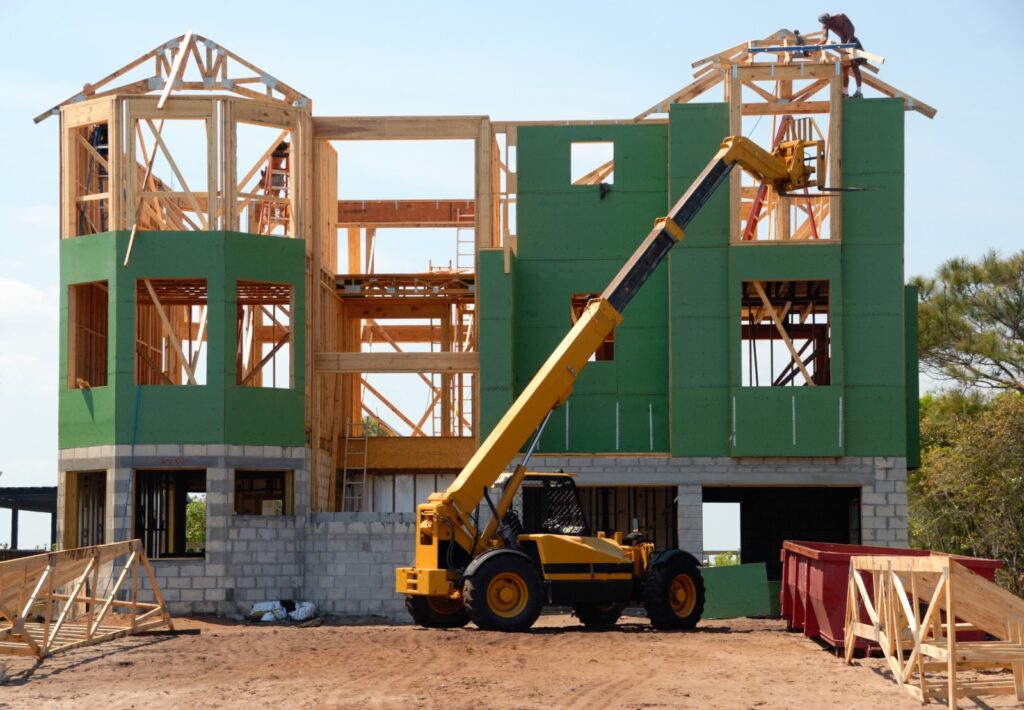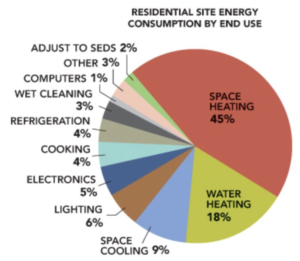
What is Continuous Board Insulation?
Second rule of thermodynamics tells us that heat flow from high temperature to low temperature. When 2 objects at different temperatures are brought in contact with each other, heat flows from one object to another. That is what happens when we step outside without a jacket in a chilly night. Our body instantly starts losing heat. In order to conserve that heat we wear insulating clothes.
Buildings are similar to our bodies in the way that they have a system regulating their temperature and they also lose thermal energy. For this reason, it makes sense to wrap our buildings around with an insulating blanket just like we wrap ourselves to stay warm.
Continuous board insulation is defined by ASHRAE 90.1 (the U.S. energy standard for all commercial and some residential buildings) as “Insulation that is continuous across all structural members without thermal bridges other than fasteners and service openings. It is installed on the interior, exterior, or is integral to any opaque surface of the building envelope.”
The Problem
Insulating exterior envelope of a building is common practice. We have been putting insulation in our 4“ thick wall cavities for years now. But there is problem with this method. Studs occur at every 16” of the length of the wall that breaks the continuation of insulation. These wood studs have only about 1/3 insulation value compared to fiberglass batt insulation. This means 3 times more heat can pass through them compared to insulating material. When outdoor temperature is above or below the comfortable range, these studs readily absorb thermal energy and leaks out to the other side which changes their temperature in the process. This change in temperature can be easily observed using a thermal imaging camera.
A 2×4 16” on center wall has a framing factor of about 25%. This means it is made up of 25% studs and 75% insulation. Due to this configuration no matter how good a wall insulation is, ¼ of every wall is still bleeding energy to the outside.
The Solution
Continuous board insulation tackles with the issues of thermal bridging very effectively. It wraps a building in an unbroken blanket of insulation and stops the thermal bridging. Just 1” of exterior continuous board insulation vastly improves the overall insulation value of a wall. It does it in 2 ways. First, it covers studs that constitutes 25% of the wall surface thereby reducing the effect of thermal bridging. Secondly it adds another layer of insulation to the cavity insulation further improving the overall R value.
Why Should we care
Heating and Cooling are the biggest sources of energy consumption in a residential building. These energy needs are almost entirely caused by flow of thermal energy through the envelope. If we can create a perfectly insulated envelope, we can completely eliminate Heating loads of a building. There will still be some minimal cooling needed to dispose of the heat produced by occupants and appliances.

A perfect envelope is not possible in the real world but there is huge potential of improvement in the current design and also a great incentive to do so. Research has proven that continuous board insulation saves the homeowner more money in utility bills than what it costs to install it. It also has an added benefit of thermal comfort.


